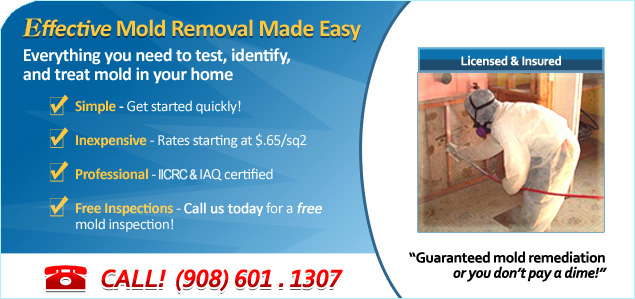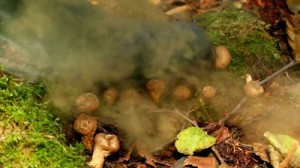
Basic Overview of the Mold Remediation Process.
The phrase mold removal, or “mold remediation” is loosely defined as a collaborative process to kill mold. Mold encapsulation is the process of blocking mold with a silver based polymer. Because silver is an effective moldicide. Silver kills mold. Mold can not grow either on silver metal, or even a polymer with a very low % of silver in it.
However, mold encapsulation can also be used in the absence of visible mold. It may be applied to surfaces where visible mold growth previously occurred. Then possibly dried up. Redundant spores can be encapsulated to sterilize them. These encapsulants are safe, propylene based polymers that react to form an elastic, mold proof seal over walls. This seal will resist moisture, mold, mildew and bacteria when properly applied. Our low silver encapsulants come with a 30yr warranty. High silver are “lifetime” warranties that last much longer than a lifetime. Longer than the house likely will in many cases.
So again, you have options.
How the mold removal process begins:
1) All HVAC systems and noncontaminated areas must be sealed off from contaminated areas. When mold is disturbed, under magnification, it releases millions of spores. If you’ve ever mowed over a mushroom on your lawn before, you can witness this basic process with large fungi such as mushrooms. Don’t forget that mold is a spungi afterall.
2) Once all areas are sealed, the mold should be powerbrushed with brass bristles. Not all areas need to be powerbrushed, only areas that have been extensively decayed by mold growth.
3) A non corrossive, non toxic , nanobased moldicide must be applied with an airless sprayer. This is for maximum penetration. Once sprayed, all areas should be left to dry for 1 hour. If you must use fans to rush the process, they absolutely must utilize HEPA filters.
4) Once all areas are dried, they should be sprayed with a safe, nanobased mold encapsulant. Certain water based encapsulants are extremely thick and may need to be diluted with water. This will depend mostly on your airless sprayer and its PSI rating.
5) After encapsulation is complete, all contained areas must be HEPA vaccumed to remove any residual more spores. This may seem like overkill to a lot of people, but we have witnessed first hand what can happen when this is not done. We have also witnessed the staggering amounts of mold spores that are released into the air anytime its disturbed. It looks like a small hurricane of mold spores landing on every surface of the contained area. This is why HEPA vaccuming should always be done at the end of the mold remediation process.
Additional information about treating mold:
As a customer, you need to ask questions and examine the mold inspector as he examines your home. There are no regulations for treating mold in New Jersey or any other state.
This is because there are more than 30 million different strains of mold and it would take a lot of money, work and resources for the government to set any kind of regulations for all these different strains.
Also, please be careful and pay attention to what the mold inspector is focused on.
We have noticed this problem in NJ where companies come out and don’t really inspect a home. They may walk around and pretend to do an inspection. Maybe espouse a few technical facts and try to impress you with the most basic knowledge about mold. But too quickly they get on the topic of mold testing. Rather than really doing a thorough inspection for mold. Where you sample from is more important than the test itself. Good samples are what yields good results. And this is hard to explain to non-scientific people. Salesman maybe overemphasize and exaggerate they uses of mold tests. They will make statements like, “we really can’t evaluate your home any further unless air sampling is done”. Things along those lines.
If mold testing can be done so inaccurately, should it be done at all?
If you are selling your home, then yes, it should be done. The home buyer will likely want to see post test results and know that the spore count came down beneath threshold levels.
The problem is, mold testing by nature is not always reliable. We do employ it in our own practice, but most companies will not explain all the factors & triggers that can result in false positives. It happens and people wind up paying hundreds if not thousands for mold tests that don’t always need to be done. Because it would have been cheaper to just do less mold testing. Then if you suspect anything at all go straight to remediation. Remediation by itself is much cheaper than tons of tests & remediation after is my point here.
Remember, the main goal here is to identify mold, kill mold, shield & secure all contaminated areas. An experienced company knows how to do this without any tons of tests. The main problem with air sampling (mold testing) is just opening your door or window on a windy day can allow in many spores & throw off your counts! So can turning on the fan if you don’t normally use it. And you have to know these things ahead of time to collect a good sample.
The real way to do mold testing and establish accurate values, is to come back to a property once a week, week after week, then calculate averages until you get them within a controlled range?
Yes, in fact – this is the only way to eliminate outliers & false positives. It’s almost like testing blood sugar just a lot more expensive. The more and more testing that is done, the more and more you realize how statistically insignificant 2 or 3 sets of mold tests are. You will gain some valuable insight but it will still be the tip of the iceberg. And that is the exact problem. So many companies run just 1 set of mold tests on 1 day at 1 particular time but will never explain to you in statistical terms, what it actually means or what the data means & what you need to do about it.
When Selling A Moldy Home?
When selling a home, these values are provided merely as a guide to the next action. The next action being either no action needed, or time for a plan. Then the plan is developed based on what we know works about science. Like mold can’t grow on silver based encapsulants. It makes a great barrier after the surface is prepped for treatment.
That is the cold hard truth.
You can get your mold dry ice blasted but the simple, effective, traditional way is best. And this involves first quaranting & sealing. Then wirebrushing the mold off of surfaces. Replace anything that’s permanently damaged, sheetrock walls, frame, foundation, whatever needs the work.
One final word about being smart with mold tests & removal.
Trust your common sense! Poisonous & toxic mold grows like poisonous mushrooms grow, or the toxic ricin beans. They all have their own compounds & exposure thresholds. But where all these things grow in nature, nature is also not as scary as you’d think. This is why you make educated decisions. Then act decisively.
Don’t focus so much on the levels, focus more on the strain. On it’s record, history & pathology.
We’ve had customers challenge us on this. But there are only really a few strains you need to be concerned about. Though there are thousands of mold strains & new ones being discovered every month.. there’s only about a dozen that have a history.
And we have no doubt that mold would be completely unviable to live in any area in your home after we have treated it!
Do you have any questions?
If you have any questions please just call Randy our senior inspector at 908-601-1307.
If you would like to check out our reviews, feel free to visit our google listing! MMRG, Mold Removal NJ Reviews



